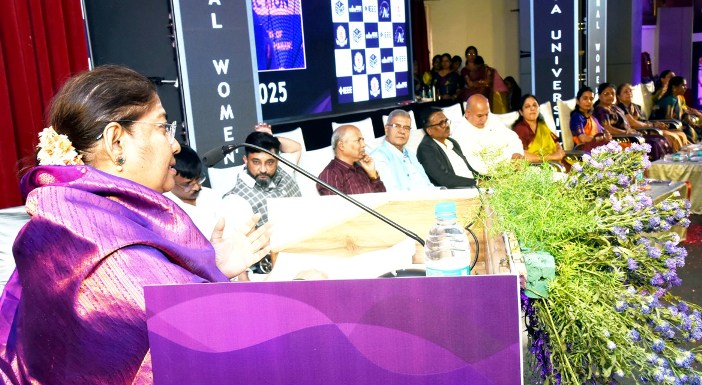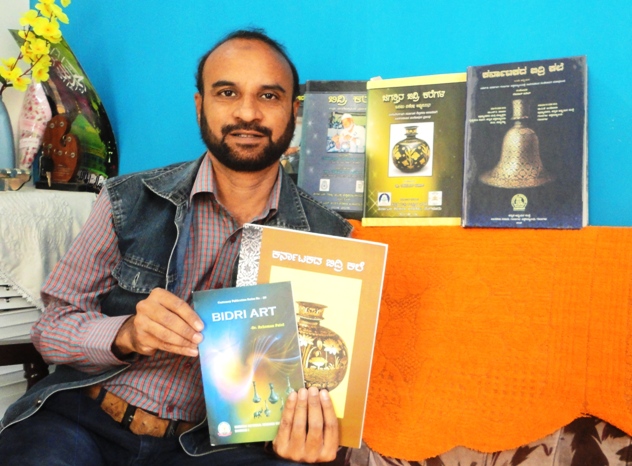Bidri Art-Celebrating 600-Years
Bidar is called the crown of Karnataka. Six hundred years ago the ninth king of Bahmani Empire, Ahmed Shah Wali Bahmani shifted his capital from Gulbarga to Bidar who ruled from 1422 till 1436 was a great change in the circle of socio-culture, art and architecture in the northern part of the state. The red soiled city houses many wonders of Indo-Islamic art and architectural structures. He was a great patron of art and architecture who made Bidar beautiful by inviting artisans and architects from Turkey and Persia.
He involved local talents to give Indo-Islamic touch to the Bahmani architecture. After the fall of Chalukya dynasty the local artisans who were expert in temple carving involved to work freely in their own style. From here the fusion of Indo-Islamic art and architecture was introduced.
Among many monuments like Fort, Solah Khamba Masjid, Rangeen Mahal, Tarkash Mahal, Gagan Mahal, Mahmud Gawan Madrasa , Chaukhandi, Bahmani kings tombs at Ashtur and Barid Shahi tombs in city, one cannot skip to mention the name of Bidri Art.
Bidar is the only city in Deccan where multi types of art could be seen. Like miniature paintings, wall paintings, stucco-work, tile-work, stone engraving, wood carvings and metal art.
Particularly when there is a mention of metal art no doubt that we are discussing about Bidri Art.
Globally recognized Bidri Art is also took birth here and patronized under Ahmed Shah Wali Bahmani. He invited metal engraver expert Abdulla bin Kaiser from Persia who later made a group of local Goldsmiths to develop this art. Even today different community artisans could be seen active in creating this art form. Bidri Art made up of Zinc, Lead and Copper alloy embedded with pure silver on outer part of the moulded piece.
Later, the artifact is placed in the boiled fort soil which gives a black tint colour. Still this art stands high in global market. The state and central government made all efforts to recognise these artisans by honouring with state and national awards. With government financial support some artists also attended events in abroad. Artist Shah Rasheed Quadri is one among them who benefited with these all events.
Now, Bidar is a hub of tourist destination and many scholars from across the globe visits for their research work. West-led researchers made excellent documentations by capturing the beauty of architecture and traced the history of this tiny town.
The people of this region gave a position of Sufi saint to the king Ahmed Shah Wali Bahmani for his kindness and social behaviour. Even today the people of different faiths worship him and a grand annual Urs fair is organized every year. A grand procession was taken at his tomb to pay tribute to the king. His tomb is the best example to show unity in diversity.
The people of Bidar are protecting the culture and harmony since six centuries. The district administration and archeology department has played a distinct role in maintaining the city’s beauty.
(Ahmed Shah Wali Bahmani ruled from October 1, 1422 to April 17, 1436). However, the Empire was ended with the eighteenth king in 1527AD.
The District Administration is organising Bidar Utsav by involving Bidri artisans who made Bidar famous with their artifacts throughout the world.
One should remember the archeologist and historian Padmashri Ghulam Yazdani and IAS officer Harsh Gupta that being a government servants they took special interest in renovation and conservations of the art and monuments. Because of such people the Bollywood and Sandalwood and others have selected this city for shooting the scenes of the fort and other monuments for their films.
Bidar Utsav should celebrate by conducting seminars and throw light on the beautiful culture of the city. Those attending the Utsav should not miss to take a tour of this historical city. And also the Bidri artisans who are responsible in protecting this traditional art form from generations should be honoured in the event.
“Artist and researcher Rehaman Patel has done extensive research on Bidri art and published the books in both Kannada and English languages”.




